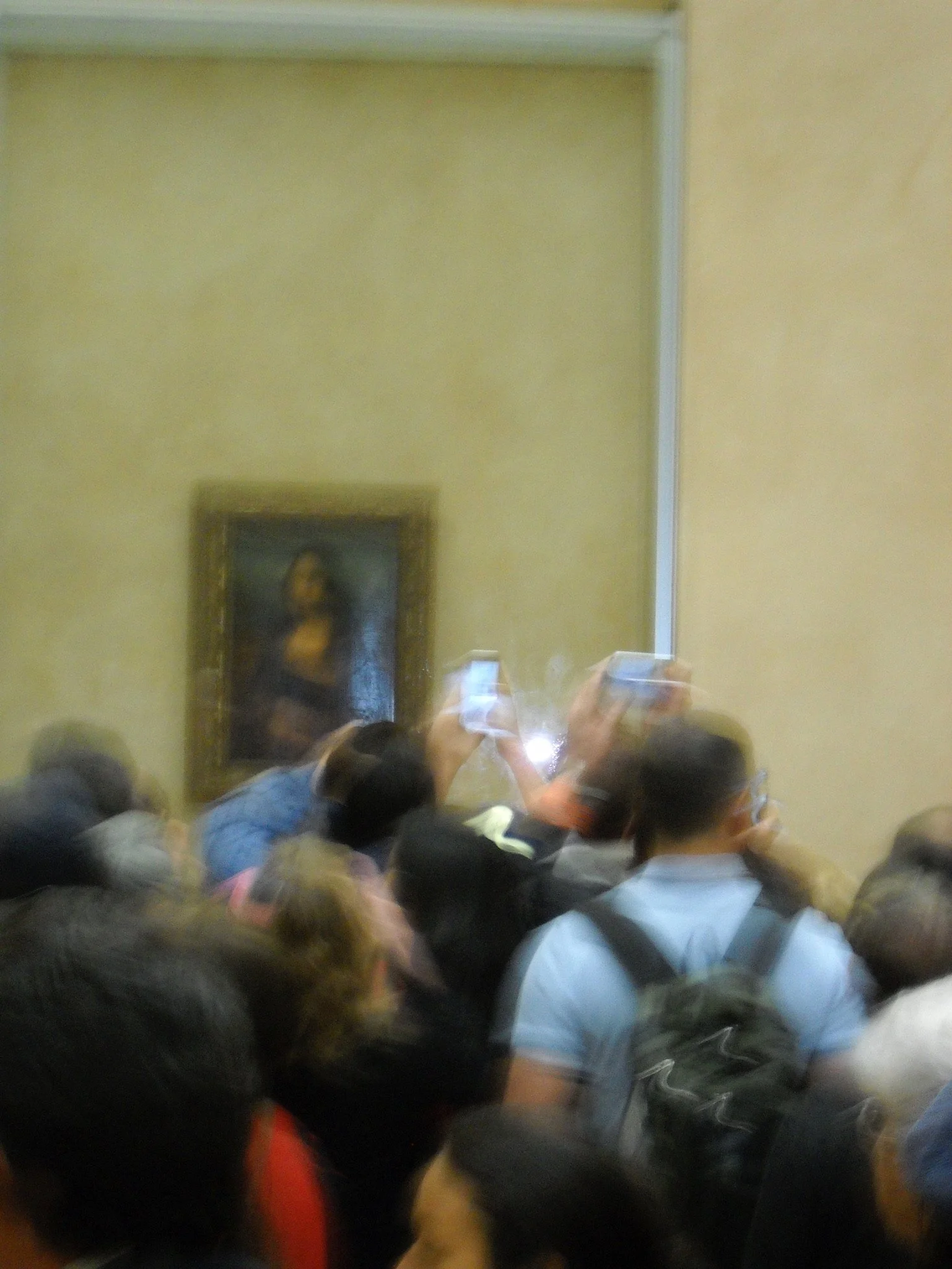David, La Gioconda, and the Squishy Tomatoes
Outside every art museum we visited in Italy, street sellers were demonstrating toys for tourists. The most ubiquitous was the squishy tomato, a sticky red blob that could be thrown and rebounded like a gelatinous amoebic yo-yo. The price of admission to these sites includes awkward interchanges with the tomato sellers, downward glances, and reluctant polite dismissals that are taken as future openings. It’s a 21st Century iteration of some of the oldest tropes in art: patronage, visibility, the juxtaposition of crap and quality, exploitation of icons.
Sometimes, art becomes a symbol, an archetype, an image for keychains and tourist t-shirts to sell alongside the squishy tomatoes, a prop so distant from its origins that it loses its essence among the crowds. The Mona Lisa is one such piece. Is she worthy of her immortalization-via-keychain?
It’s hard to tell. La Gioconda’s eyes followed me, certainly, but so many people were climbing all over each other to take pictures of her that I couldn’t figure out what she was trying to tell me. (She must be exhausted.) Meanwhile, La Bella Nani, from her corner, looked on. Those blues took my breath away, but no one seemed to be noticing them. She was overshadowed, lost in the throng, blocked by the selfie sticks. (Why was anything else even in that room?)
Then again, sometimes art lives up to the hype. The David, so much larger and more abrupt than I imagined, loomed over us in a perfection generally reserved for the Greek heroes of ancient times.
Who defines what is quality?

